Though it would be eclipsed by the gothic horror, black comedy, and sheer spectacle of his Bride of Frankenstein (1935), there’s a great deal to be said for the original — both as a piece of the puzzle and as a separate film in its own right.Whale’s first film, Journey’s End, showed little of his cinematic bravura. Waterloo Bridge, on the other hand, offered us something like the Whale we now know, but Frankenstein cemented the deal. Here Whale emerges in full flower—the stage director in love with the theatrical and drunk on the possibilities of film. Those two things—theater and cinematic possibilities—color everything about the film. Everything is theatrical—including the film’s gothic landscape “exteriors” with their painted backdrops. The creation of the monster is a theatrical event—complete with an audience for the specific purpose of being an audience. Henry Frankenstein even remarks, “Quite a good scene, isn’t it? One man crazy—three very sane spectators!” And he’s right—it is a good scene. Actually, it’s an exceptional one.
At the same time, Whale is on the loose cinematically, ignoring rules as he goes. He even opens one scene with three of his trademark gigantic closeups before he offers us the traditional establishing shot. The effect is still startling. The creation scene may be theater, but the technique—there are more than 70 cuts in the sequence—is pure film. His film is filled with shaved sets so that his camera can literally pass through walls—walls which, it should be noted, are almost always decorated with things that would hardly be in the middle of a solid wall. It doesn’t matter to Whale—what he wants is the effect. And he gets it. He aims for spectacle and achieves it.
He’s also a master showman—look how long he keeps us from getting a look at the monster. The creature’s face is bandaged when he’s on the operating table. He’s kept offscreen afterwards for a cutaway to Henry’s perturbed father (Frederick Kerr). Then when the film does return to Frankenstein’s watchtower laboratory, there’s a fairly long dialogue between Henry and Dr. Waldman (Edward Van Sloan) about the creature (“You have created a monster and it will destroy you”). When the monster finally does show up, the lights are lowered and then he backs into the room, slowly turning to face us—whereupon Whale pays off with three ever-closer shock closeups. Today, we know what the monster looks like. Imagine the effect in 1931.
There is so much to this film that it would be possible to go into it scene by scene—in some cases, shot by shot—but there’s not space for that here. However, if you like your subtext—and Whale is full of (possibly inadvertent) subtext—consider the monster in terms of Whale’s homosexuality. Consider the monster—the reason Henry has put off his wedding and gone to live in this phallic tower—as the embodiment of that sexuality, and as something that is quickly shoved into a dungeon (closet) the minute it’s inconvenient. Consider the price Henry pays for trying to ignore the monster and his responsibility. You can take these concepts through the entire film and on into Whale’s other work. (Trust me, I’ve done it in publications that allowed for the requisite length.) But if that bothers you—and it does bother some people—you can just sit back and watch the original James Whale horror show about “The man who made a monster,” and also made a star out of Boris Karloff.

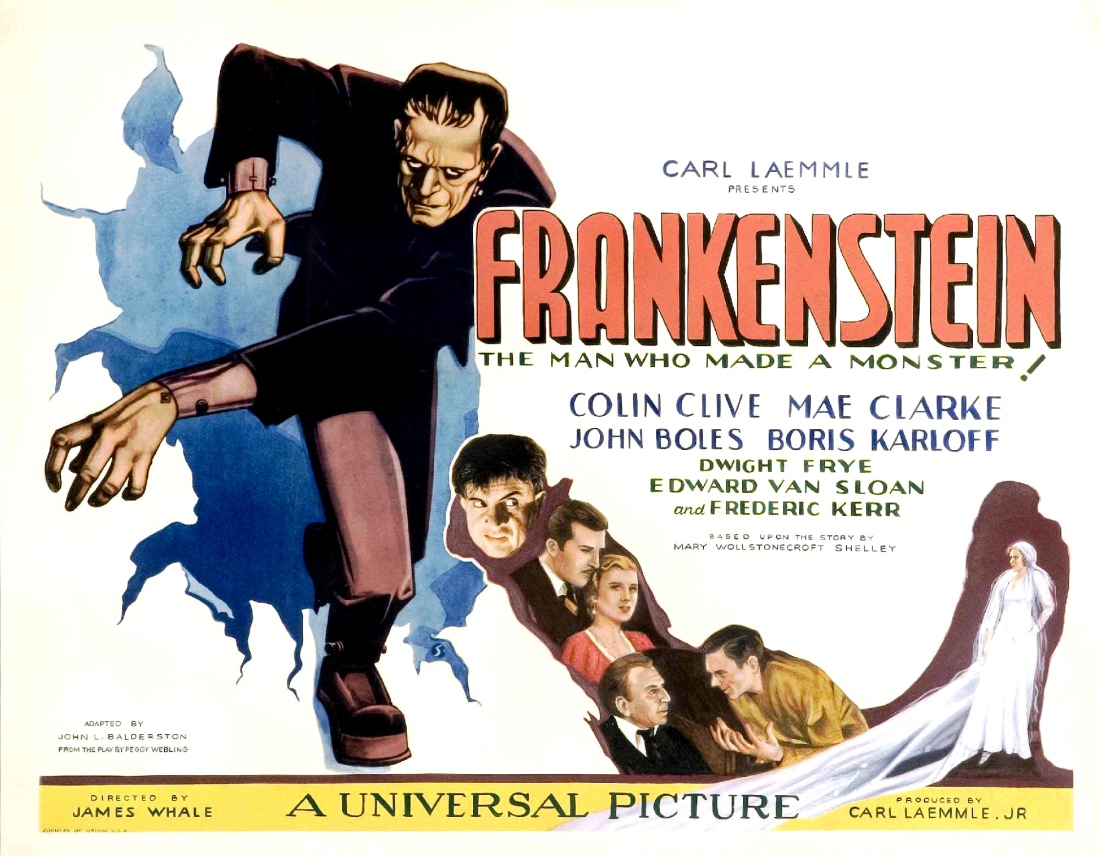
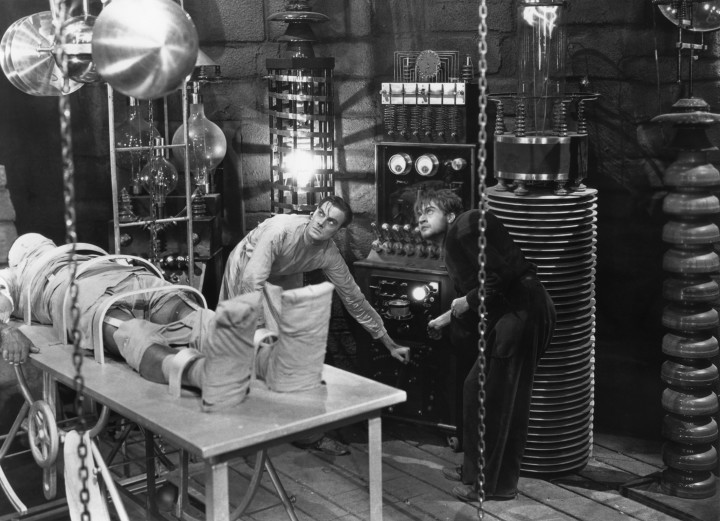

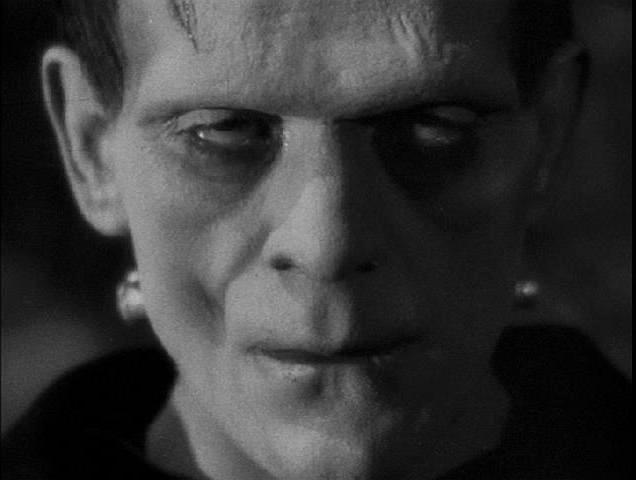
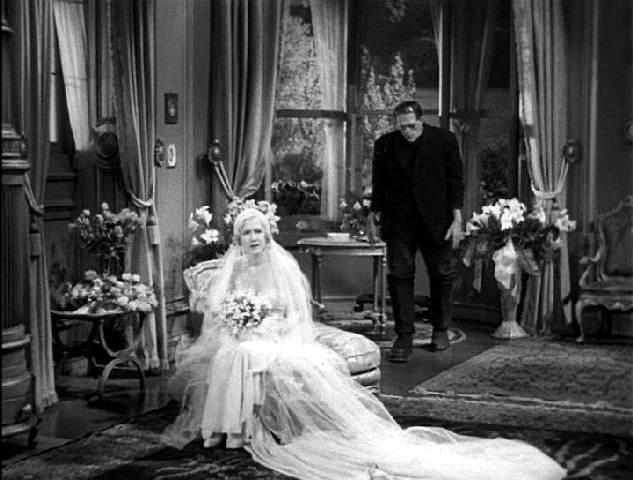
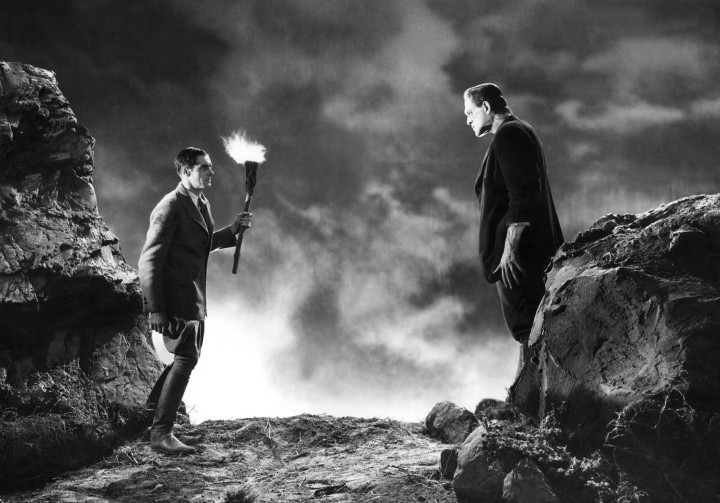

The one positive thing about the horrible Van Helsing of 2004 is that they rereleased this movie on DVD with amazing features. It’s too bad Universal is trying to make their monster series into a Marvel team movie instead of just rereleasing this as they should.
While I didn’t mind Van Helsing — it was almost exactly what I expected it to be — and it may have been partly responsible for the Legacy Sets, the DVD you refer to predates it. But why do people insist in thinking there is any real connection between the giant corporate entity that exists now and the studio that made those old films? They share some real estate and the entity owns the rights to those films, but that’s it. Universal Pictures has changed ownership at least four times since Frankenstein was made. I don’t get people expecting anything or thinking that “A Universal Picture” — or, on another tangent, “A Hammer Film Production” — has any meaning whatsoever. It’s just a brand name. Consider you can walk into a convenience store and buy a pack of something called L&M — a brand of cigarette that hasn’t been around since the 70s and which isn’t around now. The Ligget & Myers Tobacco Co. is long gone, but Philip Morris bought the name. A pack of L&Ms now is a cheap choicest floor sweepings knock off of a Marlboro. Hell, they didn’t even bother to get the filter the right color. It’s about as much an L&M as Van Helsing is a Universal horror.
On the other hand, you don’t really mean that you believe an 84-year-old 70 minute black-and-white horror picture with no background music would make money in a general release? Sure, it’s a great film. It’s a milestone. It’s a classic. It’d be on my list of 100 greatest films. Is it commercially viable to a wide audience? No.
If nothing else Frankenstein deserves its place simply because it inspired an entire genre. The fact that it is so damm good on its own is pure gravy. How many movies do that? None in many years. Except maybe the egregious Blair Witch Project. How I wish it had inspired nothing. Sadly, like reality TV, found footage movies are usually cheap as hell to produce and even though they may not make as much money they can still make more profit. I’ll never forgive A&E for dropping the excellent Hornblower productions for A Camera Pointed At 6 Boring Assholes or whatever they call that “Reality” garbage these days.
The probability of Blair Witch being remembered 84 years after the fact seems remote.
True. But I’ll bet that found footage movies will always be with us.
I think they are passing their sell-by date. No matter how cheap they are to make, the audience does seem to be dwindling. Then again, if you’d told me rap would last this long…
Yes they’ve been beaten to death but every once in a while someone decides they might make a buck or two on one with some infinitesimally minor tweak to the plot. Unbelievably there has actually been a good one, Troll Hunter. The cave scene is priceless.
Oh, there’ve actually been two or three pretty good ones. While Troll Hunter certainly qualifies and is easily the best of the breed, it hardly made enough money to add to the problem of this particular format continuing.
I almost passed over this given the subject matter which I know so well. This is one of the finest pieces I’ve seen written on this seminal horror film. It isn’t easy to say something fresh about a film one has memorized scene for scene and line for line. Your insight on Whale’s direction and remarks on specific composition and cuts have me wishing I had the DVD on hand tonight.
Thank you, Mr. Maynard, but …one should never not have Frankenstein on hand!
Well, I was out of the country when I wrote that…
Poor planning.